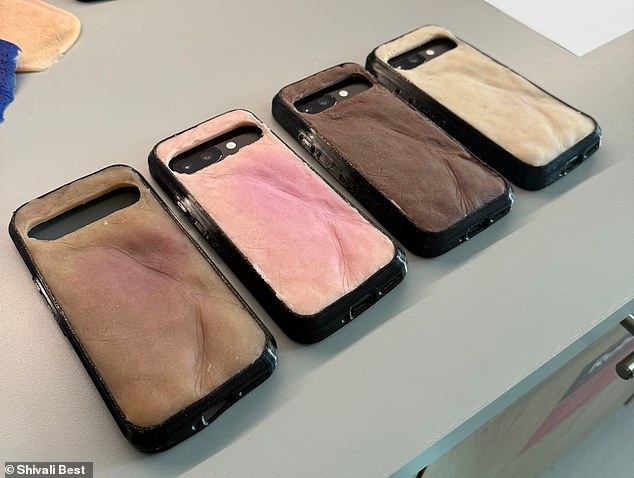A New Phone Case That Mimics Human Skin
Phone cases have come a long way from the basic plastic models of the past. From flashy, glittery designs to the classic wallet-style cases, there’s no shortage of creative options available today. However, one new design is pushing the boundaries of what a phone case can be—literally.
O2, a telecommunications company, has partnered with Creative Technologist Marc Teyssier to develop a groundbreaking product known as the ‘Skincase.’ This innovative phone case is designed to look and feel like real human skin. Made using 3D-printed silicone, the Skincase not only resembles human skin visually but also offers a tactile experience that mimics the texture of actual flesh.
The Skincase comes in four different skintones, each infused with special pigments that react to ultraviolet (UV) light. Just like human skin, the case changes color when exposed to sunlight, offering a visual representation of how UV exposure affects our bodies. The idea behind this feature is to raise awareness about sun safety, especially for those planning trips to sunny destinations.
Mr. Teyssier, the mind behind the project, explains that the goal is to create a tangible and visceral reaction to UV exposure. He believes that by doing so, the Skincase not only highlights the importance of sun protection but also encourages people to take their skin health seriously.
Europe has recently experienced some of the hottest temperatures on record, with heatwaves sweeping across the continent. In Spain, the temperature reached an unprecedented 46°C in El Granado, while Portugal recorded a high of 46.6°C in Mora. These extreme conditions underscore the need for effective sun protection measures, especially during the summer months.
With many people planning their European vacations, O2 aimed to find a unique way to remind travelers about the importance of sun safety. Christian Hindennach, Chief Commercial Officer at Virgin Media O2, emphasized that holidays should be about creating memorable experiences rather than worrying about sunburn or mobile data charges. The Skincase, according to him, serves as a real-time reminder of the potential consequences of prolonged sun exposure.
To bring the Skincase to life, Mr. Teyssier combined silicone with UV-reactive pigments and used a 3D printer to shape the material. He even added fine lines to the surface, making it resemble the palm of a hand. When kept indoors or in the shade, the case appears as beige, tan, or dark brown, depending on the chosen design. However, once exposed to sunlight or a UV light source, the case quickly changes color, turning either pink or darker brown.
Despite its impressive features, the Skincase is still in the prototype stage, and there is currently no official announcement regarding its availability in the UK. While it may not be ready for mass production just yet, the concept has already sparked interest and conversation around the intersection of technology and human health.
This isn’t the first time that Mr. Teyssier has explored the idea of creating phone cases that mimic human skin. In 2019, he developed a similar product that responded to various forms of touch, such as tickling, caressing, and pinching. At the time, he explained that the design incorporated a subtle surface texture, with sensors embedded in the dermis and hypodermis layers. The elasticity of the material allowed for expressive gestures, making the experience more interactive and lifelike.
As the world continues to explore the possibilities of integrating technology with everyday objects, the Skincase represents a fascinating step forward. Whether it eventually makes its way to market or remains a conceptual project, it certainly raises important questions about how we interact with technology and the environment around us.







